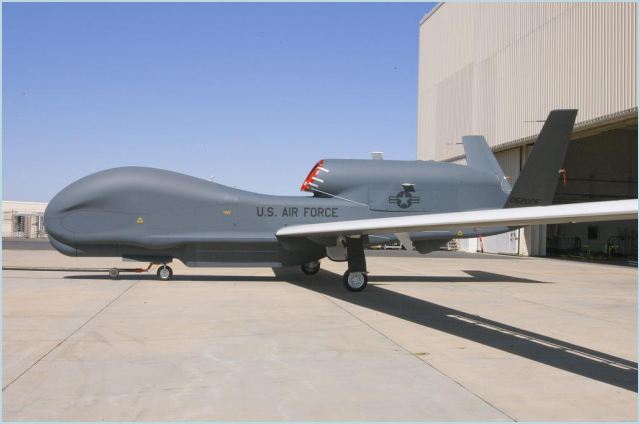Breaking news
Northrop Grumman Global Hawk Takes Part in NATO Exercise to Evaluate Joint ISR Capability.
| a | |||
| |
|||
World
Air Force News - Europe |
|||
| Northrop Grumman Global Hawk Takes Part in NATO Exercise to Evaluate Joint ISR Capability. | |||
Northrop Grumman Corporation has participated in Unified Vision 2014 (UV14), NATO's largest trial of Joint Intelligence, Surveillance and Reconnaissance (JISR) capability aimed at demonstrating and evaluating the Alliance's ability to coordinate and deploy crucial Allied ISR systems. |
|||
 RQ-4 Global Hawk (Photo credit : NG) |
|||
During the 10-day trial, U.S. European Command, in close coordination with and in support of NATO flew the high altitude long endurance unmanned aerial system (UAS), Block 30 Global Hawk, in three successful full-day sorties from Ørland Main Air Station, Norway. The trial comprised of satellites, aircrafts, unmanned aerial vehicles, naval vessels, ground sensors and human intelligence from 18 NATO countries and tested NATO's ability to gather information and fuse intelligence from multiple sources – space, in the air, on land and at sea – at different stages of operations. Northrop Grumman is the prime contractor for the NATO Alliance Ground Surveillance (AGS) system, a derivative of the combat proven Global Hawk. The Global Hawk used in the trial is currently stationed at Sigonella Air Base, Sicily, Italy which will serve as the main operating base (MOB) for NATO AGS. UV14 will help NATO prepare for the introduction of its future AGS capability and to enhance data sharing with other ISR systems provided by nations. "This exercise demonstrated the powerful role unmanned systems can play in helping NATO conduct its future ISR operations," said Jim Edge, General Manager, NATO Alliance Ground Surveillance Management Agency (NAGSMA). "It was great to see how existing airspace procedures enabled the seamless integration of a NATO AGS into European airspace for this trial." Joint ISR (JISR) is a key factor associated with the Alliance's strategic readiness and the success of its operations and missions. In May 2012, NATO decided to acquire an AGS system that will give commanders a comprehensive picture of the situation on the ground using five Global Hawk unmanned aerial vehicles. Northrop Grumman and its European industry team also supported the Joint Force Commander with daily high-resolution simulations of NATO AGS and daily live data surveillance products from interoperable systems. The ground components of the NATO AGS system supported the production and fusing of intelligence data from a wide variety of employed NATO assets, a key piece to NATO developing Tactics, Techniques and Procedures (TTPs) for interoperability between the systems from many nations. Enhancing NATO's JISR capabilities is a major theme that will be highlighted at the NATO Summit in Wales in September. NATO AGS includes European-sourced ground assets that will provide in-theatre support to commanders of deployed forces. Mobile and Transportable Ground Stations will provide an interface between the AGS core system and a wide range of interoperable NATO and national command, control, intelligence, surveillance and reconnaissance systems. NATO is acquiring the system with 15 nations participating, including: Bulgaria, Czech Republic, Denmark, Estonia, Germany, Italy, Latvia, Lithuania, Luxembourg, Norway, Poland, Romania, Slovakia, Slovenia and the United States. NATO AGS will be able fly at 60,000 feet for more than 30 hours, making the system uniquely suited to NATO's global needs. Global Hawk platforms have logged more than 115,000 flight hours and have supported operations in Iraq, Afghanistan, Libya and Nigeria. The system has also collected weather data in support of scientific missions and participated in humanitarian relief efforts after the devastating natural disasters in Haiti, Japan and the Philippines. |
|||



















